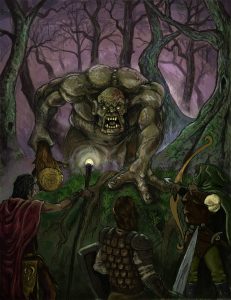So a couple years back I figured out a neat way to have a sign company print my sketch straight to primed masonite. This made setting up a painting way easier than projecting my sketch to the board, mounting a sketch, or other tedious methods. This worked extremely well. The printed image, which was meant for store signage was lower resolution, but it was great for an underpainting. I told others about it, and soon people were sending in art and the company was sending out printed panels all over the US.
Then I started having doubts. We have all heard horror stories of paintings peeling off of canvases because of bad gesso. So I looked into the media that was being printing on these boards. It was UV reactive and weather sealed. Seemed ok, but of course nothing stated it as archival. Who gets a sign made for their shop and asks if it is archival. We had a couple of signs we made for the Ren Fest and that’s what made me start to worry even more. The first year the signs looked great. I had added some acrylic flourishes to them and coated them with Spar Urethane. The second year they started to look cloudy. I looked up the sign printing information again, and saw that a benefit of the UV treated inks is that it is hard to stain. Nervousness started to sink in.
By the third year both signs were peeling and unrepairable. So I though, what is going to happen to our paintings over the next 10 years? Look at what happened to Davinci’s Last Supper. So I immediately started looking for a more archival way to basically do the same thing.
The solution
I had started looking at the fine art papers for our Epson printer. I ordered in some of the Epson Watercolor paper, and planned on using it on my next project. At Dragoncon, I spoke with Todd Lockwood, telling him my ideas, and he told me that is how he did the cover for his first book, The Summer Dragon. In fact he pointed me to this great video of him mounting the paper, which was very helpful.
So I just recently got to try out my new process. I had a small monster who needed some color. So I scanned in the pencil sketch and did a quick digital underpainting. I then printed him out (9×12 as my Epson can do a max of 13×19) and mounted it to a Birchwood panel. A day later after the acrylic medium dried, I was able to knock out some glazes and brought him to life.

Not too shabby huh?
The next project is the cover for Shonn Everett’s book The Crossing, a Dark Return adventure book. It will be a little more involved, so I will be sure to post updates!
Until next time! -Mike

